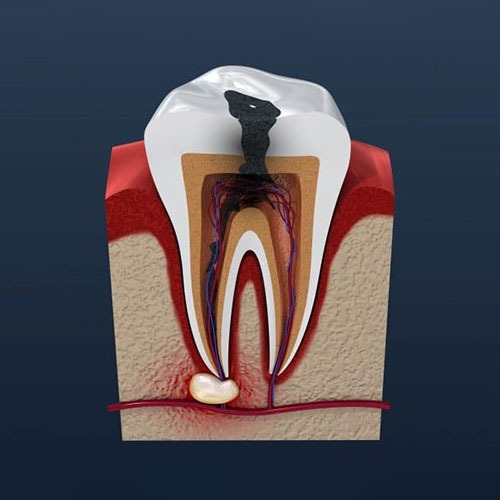Everything you need to know about Abscessed Tooth
Everything you need to know about Abscessed Tooth:
What is an abscess?
Primarily caused due to infections by bacteria, an abscess is a sensitive puss-like mass that looks red in color. They are painful to touch and are generally a nuisance.
An abscess around the teeth can occur in different parts of the mouth. They tend to cause stinging pain which can even be felt in the ears. If left untreated, an abscess can cause serious issues in your mouth that have irreversible damage to one’s mind and body altogether.
Different types of abscesses:
Periapical abscess – this usually occurs at the tip of the root of teeth.
Periodontal abscess – this targets the gum that is immediately next to the root of the tooth. It has the potential to spread even further affecting the tissue and bone near it.
Gingival abscess – this targets the gum in general.
Symptoms to look out for:
The most obvious symptom is a thumping pain in your mouth. The pain can occur anywhere inside because of its intensity. The pain comes and goes without any warning and increases over time. Moreover, the pain can also be felt near your ears, nose, and jaw. Since the pain worsens with time, it can cause swelling in the cheeks and can severely damage the jaw structure. The presence of a foul taste in the mouth tends to be another reason that should immediately draw your attention to the presence of an abscess in your mouth.
Furthermore, if an abscess bursts for some reason, you will be able to notice a sudden relief from pain with the revolting taste of the pus spread in your mouth.
How does an abscess form?
Due to the bacterial nature of an abscess, it can be quite difficult to pinpoint the source of it affecting your dental hygiene. If in a case that a bacteria does reach the teeth and gums, an abscess is likely to form.
When bacteria enter through to the pulp inside your teeth, through a cavity, it causes a periapical abscess.
Problems in gums usually cause a periodontal abscess.
If an external item gets lodged between the teeth, you can get a gingival abscess.
How can you treat an abscess?
Like any other bacterial infection, an abscess is treated by cleaning up the source of the infection. It also helps in dealing with any kind of pain that the patient might be going through. A dental x-ray is crucial in locating the source of the abscess and controlling the spread to other areas of the tooth.
Procedures include puncturing the abscess to drain out the pus. This is essential to stop the pus from infecting other parts. A root canal is another way to deal with the problem. Drilling down the infected tooth and removing the diseased part is a crucial way to deal with the teeth rotting down from the inside. As a preliminary measure, one can even rinse their mouth with warm salt water to ease the affected parts.
Precautions to keep in mind.
An abscess needs to be treated by a dentist urgently. If the pus is spreading, it needs to be cleaned thoroughly and the wound needs to be cured expertly and quickly.
If it is left untreated, an abscess is most likely to spread to the jaw, ears and nose, and sometimes even the brain. In very rare cases, an abscess can even cause sepsis which is a life-threatening situation caused by an infection.

